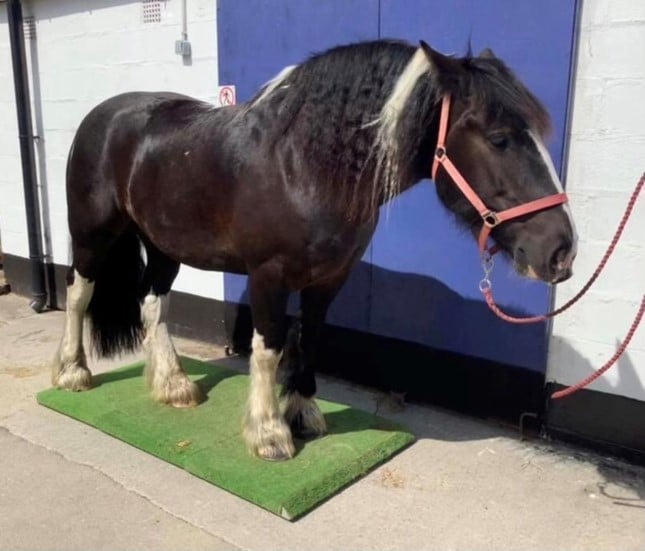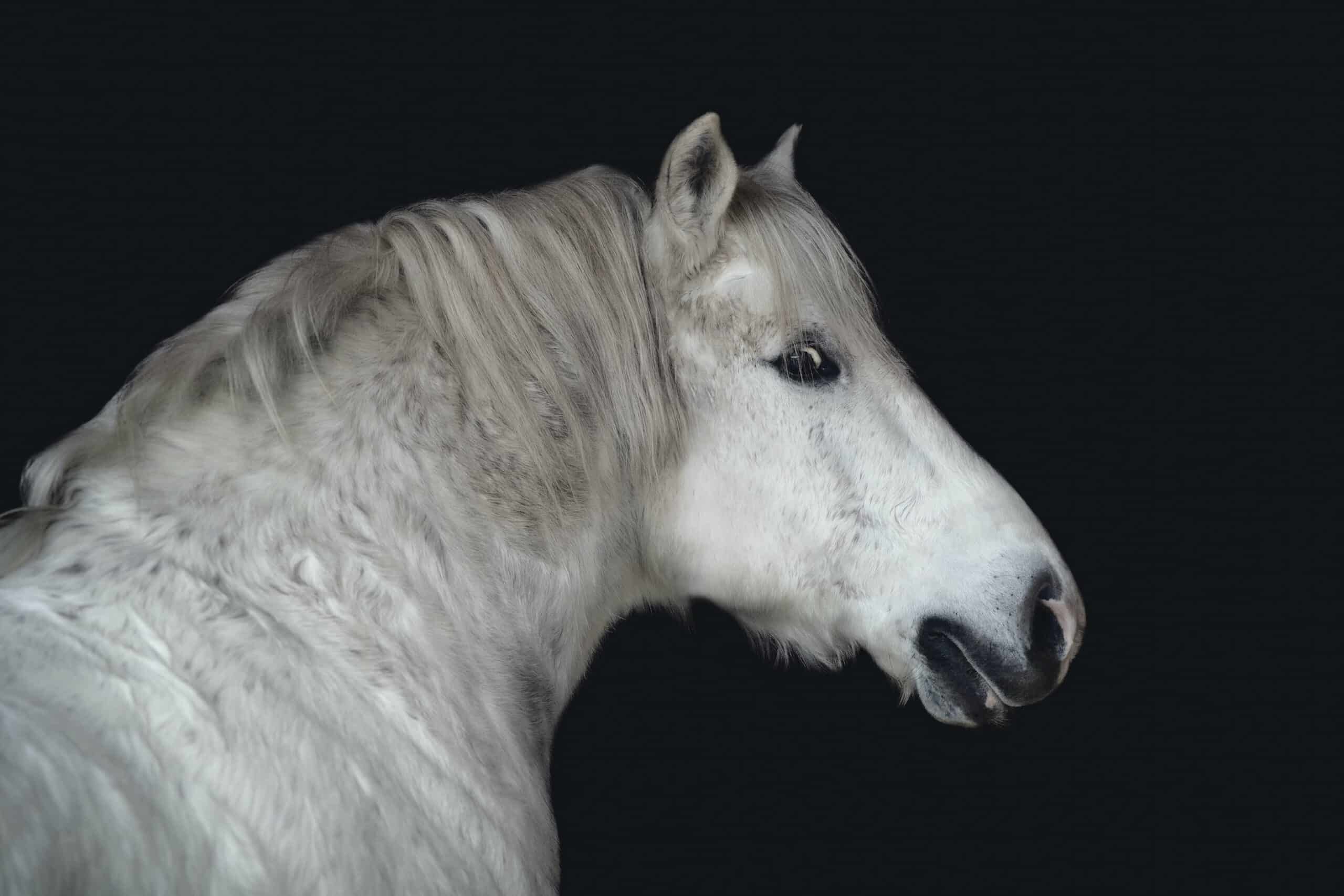Appetite & Feeding, Daily Management, Nutrition
What is a good-doer?
Independent equine nutritionist Jennifer Little, discusses how to recognise if your horse is a good-doer
The term ‘good-doer’ or ‘easy keeper’ is often and frequently used among owners, veterinarians, yard managers and trainers but, what does this actually mean? Black’s Veterinary Dictionary fails to provide a definition, so not surprisingly there can be confusion around the correct usage of this term. “It’s often used by veterinarians to describe a horse or pony, with a tendency to be overweight and that appears to require fewer calories than most horses to maintain condition”¹.
Horses of any type can be a good-doer but, there are breeds that appear more likely to fall into this classification. The reasons still need to be proven but, a genetic predisposition has been proposed in the theory of the “thrifty genotype”². Certain lines of horses appear to have inherited the genetic ability to survive poor feed availability. While advantageous in the past, today with modern equine management and more frequently leisure based work loads – this can be positively dangerous.
The good-doer is now predisposed to obesity rather than survival. Obesity is the disease where the accumulation of fat (adipose tissue) has reached a point that the state of health can be impacted. Studies in the UK have found that 45% of horses/ponies were fat (overweight) or very fat/obese³.
The term good-doer relates to the horse’s propensity to hold or gain weight – it is not a definition of their current body condition. These horses are more likely to be overweight or obese with the same management as other horses but, they are not necessarily destined to be obese. There are many ways we can manage these horses to ensure that they their weight is prevented from creeping up to a point that impacts on their health. Before any management steps can be put into action it must first be possible to recognise whether the horse is a good-doer, over-weight or obese.
How do we recognise what type a horse is and, is this enough?
There are tools for assessing a horse’s weight, including breed-weight range charts, weigh-tapes and even portable weigh-bridges. Each of these range in ease and cost of use, effectiveness and variance in results, depending on who is using them and, how ‘typical’ the horse is. If there is a series of recorded weights for a horse over a period of time this will provide a trend, showing if weight is increasing or decreasing, which allows for appropriate changes in management if required.
Having an accurate weight does allow for correct medication dosage and ration formulation. It does not however, provide much information as to the condition of the horse. Frequently I’m asked by an owner who has used a weigh-bridge, “what should they weigh?” A method for calculating if a horse’s weight is appropriate is to use Body Condition Scoring (BCS). BCS is a visual grading of the superficial fleshy areas on a specific horse, to determine if their weight is under, appropriate, fat, or obese. There are two BCS scales used specifically for the horse, the 0-5 scale or the 1-9 scale. Both assign a score, rating the horse from poor to obese, depending on the extend of flesh at specific points on the horse. Ther e have been multiple studies examining the ability of owners to identify if their horse is overweight or obese – often only around 50% were found to be able to achieve this³ ⁴. Even with experienced evaluators it is often difficult to differentiate fat tissue from muscle¹.

Recognising an already overweight/obese horse is difficult so, how do we recognise the good-doer that isn’t overweight? This can be achieved through knowing the history of the horse and, any changes in management or increases in available forage that have resulted in rapid weight gain, which has proved difficult to reverse. If body condition seems to have changed significantly and quickly, it is advisable to seek veterinary advice to rule out medical conditions e.g Equine Metabolic Syndrome (EMS).
Managing different types through the winter
As conditions get tougher with colder weather, poorer grass, reliance on dried forage and, fewer daylight hours, management usually needs to adjust. Metabolically, horses have evolved to gain weight and fat (adipose tissue) over the longer days of spring and summer, then to lose it over the colder winter months. This natural fluctuation allows their hormone system to function correctly. Increasing insulin sensitivity, regulating appetite and, reducing the risk of conditions such as laminitis and EMS.
“The saying “Horses are meant to lose weight in the winter”, while factually correct, may not be appropriate for all.”
I tend to see the opposite to this; with owners diligently trying to eliminate the seasonal effects of winter vs summer, to keep their horses perfect all year. If this natural pattern is prevented from occurring, the weight gain of each summer accumulates, resulting in obesity. To prevent this situation, the ideal BCS of a horse (without clinical conditions) changes slightly over the course of a year. A BCS of 3-3.5/5 by October and dropping to a BCS of 2.5-3/5 come March. The good-doer seems programmed to overly achieve the summer gain but, not so programmed for the weight-loss of winter.

Managing weight loss for the good-doer
The horse’s digestive system has evolved to trickle feed; as a result it is critical that horses are provided with sufficient fibre to maintain their health. They require an almost constant supply of forage. For the good-doer “constant supply” does not mean an “all you can eat buffet”. Even during a weight loss plan a horse needs an absolute minimum of 1.5% – 2% bodyweight per day (on a dry matter basis) of forage, including grass, hay, haylage, chaffs etc. It may be necessary to provide this volume in a controlled manner, preventing the good-doer from guzzling their allowance and then being left for hours with nothing to chew on. Solutions can include splitting their forage ration into more small holed or doubled up haynets, hanging them in different points in the stable to increase the horse’s movement and, to reduce the speed it is consumed. Hay can also be soaked to lower its calorie contribution – this will reduce the soluble carbohydrates consumed.
Most good-doers will struggle to consume the minimum feed rate of a typical hard feed, without gaining excessive weight. This minimum feeding rate is required to provide the vitamins, minerals and essential amino acids (EAA) lacking from forage alone. Restricting hard feed can make ensuring the horse is on a complete balanced diet difficult but, it is achievable with the correct choice of low intake feed, such as a balancer.
Weight loss through the winter is helped with the correct choice of rugs. Many published rug guides presume ideal body condition and as such, are not suitable for the overweight or obese horse. An unclipped, over-weight horse should not require a rug over a UK winter. Even an unclipped, dry horse, with an ideal BCS wont start to burn energy for warmth until temperatures drop below 5°C ⁵. Once clipped (or not overweight) a horse may require rugs to prevent excess heat-loss, especially if exposed to rain and wind.
Managing the ‘not so good doer’
As overweight/obese horses tend to be the majority in the UK, there is a potential risk to the greater population. If the “rules” for correct winter management for the good-doer are taken as winter rules for all, it leaves the underweight, poor horses or, Thoroughbred types that may lose condition easily, at the mercy of winter.
Horses that head into winter with little or no weight to lose require very different management. Veterinary advice should be sort if the extent or cause of poor body condition has not previously been diagnosed. Providing ad lib good quality fibre, at an absolute minimum of 2% body weight per day (DM basis) is essential. If dental issues reduce the amount actually consumed to below this, then alternative forms of forage maybe required e.g. soakable alfalfa. Higher energy hard feeds with greater fat (oil) content maybe required. Bucket feeds should be kept to a maximum of 2kgs, this is more suitable for stomach capacity and, will aid nutrient digestion and absorption. These individuals are more likely to require rugs to prevent unnecessary energy expenditure for warmth.
Correct winter management needs tailoring to the individual horse. The choice of rugs, feeds and methods of forage provision are often be emotive. The saying “Horses are meant to lose weight in the winter”, while factually correct, may not be appropriate for all.
References
1. Geor, R.J., Harris, P.A., Coenen, M. 2013 Equine Applied and Clinical Nutrition. Health, Welfare and Performance 393, 487-490
2. Treiber, K.H., Kronfeld,D.S., Hess, T.M et al 2006 Evaluation of genetic and metabolic predisposition and nutritional risk factors for pasture associated laminitis in ponies. Journal of the American Veterinary Medical Association. 228, 1538-1545
3. Wyse, C.A., McNie,K.A., Tannahil, V.J., er al 2008 Prevalance of Obesity in riding horses in Scotland. Veterinary Record 162, 590-591
4. Stephenson et al 2011 5. Morgan, K. 1998 Thermoneutral zone and critical temperatures of horses. Journal Thermal Biology. Vol 23, No.1 pp59-61
